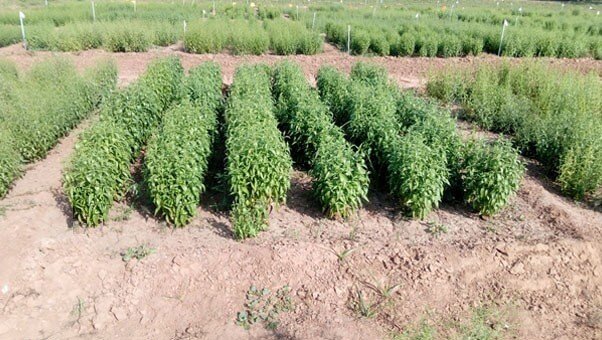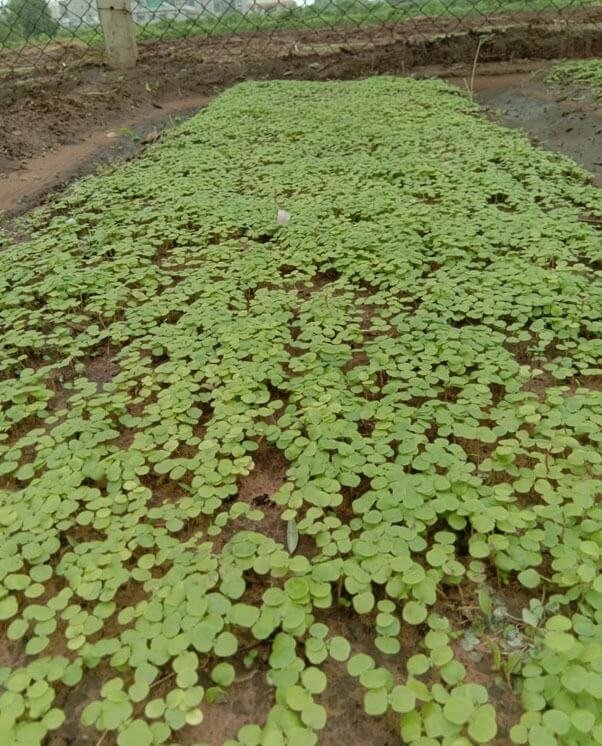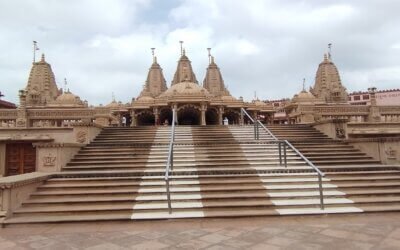Kalmegh (Andrographispaniculata) Detail Information :
Kalmegh is an annual herbaceous plant of 1-3 feet in height which belongs to family Acanthaceae. It is commonly known as ‘King of Bitters’ or Green Chiraita. Entire aerial parts are medicinally important in Ayurveda and other Indian Systems of Medicines.
Distribution: The species is widely distributed throughout the plain of India from Uttar Pradesh to Assam, Madya Pradesh, Tamil Nadu and Kerala.
Uses: The kalmegh plant is useful in all types of fever, liver disorders, debility, diabetes, bronchitis, gastrointestinal disorder, diuretic ailments, hypertension and convalescence after fever. It is also having demulcent property. It is said to act as natural immune-booster as it has antiviral and anti-oxidant properties and will give relief even in fever caused by corona virus. The plants are used as substitute of Chiraita (Swertia chirata).
Kalmegh Chemical properties :
The major active ingredientis Andrographolide (2.0-2.5% in herbage) and the plant also contains neoandrographolide, isoandrographolide, 14-deoxyandrographolide, 14-deoxy-11,12-didehydroandrographolide and many others. Flavonoids and polyphenols are also present.
Varieties:
- CIM Megha developed by CIMAP, Lucknow, UP, India.
- Yield: 3.2 – 4.0 tonnews/hectare with 2.33 to 3.18% Andrographolide and 0.76 to 1.32% neo (Andrographolide)
- AK1 developed by AAU, Anand, Gujarat, India.
- Yield: 3.65 tonnes/hectare
- Vallabh Kalmegh 1 developed by ICAR – DMAPR, Boriavi, Anand, Gujarat, India.
- Dry herbage yield of about 4740 kg/ha and Andrgrapholide yield of 92 kg/ha. (Andrographolide content 1.5 to 2.5%)

Kalmegh Propagation and Cultivation:
The crop grows well in humid, hot, warm, or cooler climates. The seasonal average temperature of 25 to 380C is ideal for crop growth.
Nursery preparation:The plant is propagated through seeds. Generally, the seeds lose their viability after two years of collection. Nursery preparation is dependent upon the onset of rain in the country. Nursery raised seedlings are used for transplanting. Liberal used of organic manure in nursery is advised for raising healthy seedlings.
About 30-40 g of seed is required per m2 of nursery bed and about 400 g seed is required for raising seedlings for one hectare.
Seeds are broadcasted on the beds and then uniformly covered by thin layer of soil. Beds should be covered by suitable mulch till the seedlings emerge. The seedling germinated after 6-7 days of sowing and the mulch is immediately removed. Seedlings are ready for transplanting after one month.

Fertilizer needed: In the field 10-15 tonnes/hectare of farm yard manure is added and the land is ploughed thoroughly and levelled to avoid water stagnation. Nitrogen 80 kg, Phosphorus 40 kg, Potash 40 kg are applied in 1 hectare of land. Phosphorus and Potash are applied at the time of land preparation with one-fourth nitrogen. Rest of the nitrogen is applied in three equal split doses at about 30 days intervals.
For organically grown crop the well decomposed Farm Yard Manure (FYM), Vermicompost, Castor cake, Neem cake, Green manure etc. can be added as per the requirement of the crop.
Transplantation and cultivation: Transplanting of seedlings is done during second fortnight of June to second fortnight of July at a spacing of 30×15 cm. field is irrigated immediately after transplanting if there is no rain. Second irrigation is given after 10-15 days after transplanting depending upon the rain. Regular irrigation is required at 30 days interval. Gap filling is done after about 10-15 days of transplanting along with irrigation. Within 30 days of transplanting one/two weeding/hoeing are essential to get the crop established.
Harvesting: The entire plant material is harvested at 120-130 days after transplanting which is washed and spread in a single layer on hanging net platform in open condition for one day. The next day the herbage is chopped into pieces for efficient drying under the sun or solar drying or shade drying. Rapid drying (up to 500C) is beneficial for quality of raw drug. A well-maintained crop yields 3-4 tonnes of dried herbage/hectare.
The dry herbage is stored in clean plastic bags for selling. The herbage can be stored maximum up to one year after which the quality of the raw drug deteriorates.
Economic of Kalmegh :
The trade volume of this species is about 2000-5000 MT in India per year.
The price of the plant at Delhi market is Rs. 150/kg (during the year 2018 to 2021)
https://echarak.in/echarak/marketwise1.do
References:
- Dr. K.A.Geetha (2019) Handbook of Horticulture (II edition), ICAR- DKMA Publishers, (Vol 2), Pp. 927-928
- Mohmmed Ali (1993) Textbook of Horticulture (II edition), CBS Publishers & Distributors, New Delhi, pp-386


Your style is very unique compared to other folks I’ve read stuff from. Thanks for posting when you’ve got the opportunity, Guess I’ll just book mark this page.
A motivating discussion is worth comment. I think that you ought to write more about this topic, it may not be a taboo matter but typically folks don’t talk about these issues. To the next! Many thanks!!